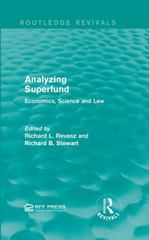show calculation please thank you
89. Diagrams are tools of: (a) collection of data (b) analysis of data (c) Summarization of data (d) Presentation of data 90. Ogives are useful to locate: (a) mean (b) median (c) mode (d) weighted mean. 91. Histogram is useful to determine: (a) mean (b) median (c) mode (d) all these. 92. For open-end classification, the best measure of central tendency is: (a) AM (b) GM (c) Median (d) Mode 93. The most commonly used measure of central tendency is: (a) AM (b) Median (c) Mode (d) HM. 94. Quartiles can be determined graphically using: (a) Histogram (b) Frequency Polygon (c) Ogive (d) Pie chart. 95. The value of the middle most item when they are arranged in order of magnitude is called: (a) Quartile (b) mean (c) mode (d) median 96. The value which occurs with the maximum frequency is called: (a) median (b) mode (c) mean (d) none 97. For calculation of we have to construct cumulative frequency distribution. (a) mode (b) median (c) mean (d) none 98. The measure of central tendency which is based on all the observations of a series is: (a) mean (b) median (c) mode (d) deciles 99. Average is a measure of : (a) central tendency (b) dispersion (c) symmetry (d) concentratio 100. To find median, arrange the data in : (a )ascending order (b) descending order (c) ascending order or descending order (d) no order 101. -- -percentage of values of a series are less than Q (a) 50 (b) 75 (c) 25 (d) 1078. Breakeven point is a point at which : (a) TR=TC (b)TR=AR (c) TC=AC (d) none of these. 79. In the consumption function C = a+by, the constant b denotes: (a) elasticity (b) MPS (c) MPC (d) none of these. 80. Total cost is equal to: (a) TVC+TFC (b) AFC+AVC (c) AVC (d)AFC 81. Statistics deals with : (a) qualitative information (b)quantitative information (c) both (d) none. 82. Statistical results are: (a) absolutely correct (b) not true (c) true on an average (d) universally true. 83. Statistics are: (a) aggregate of facts (b) numerically expressed (c) systematically collected (d) all of these 84. Statistical methods are: (a) collection of data (b) classification (c) analysis and interpretation of data (d) all of these. 85. An attribute is: (a) a qualitative characteristic (b) a quantitative characteristic (c) a measurable characteristic (d) all these. 86. Tally marks determine: (a) class width (b) class boundary (c) class limit (d) class frequency 87. When the upper limit of a class is the lower limit of the next class, the series is known as : (a) Exclusive (b) inclusive (c) individual (d) discrete 88. Pie diagram is used for : (a) comparing different components and their relations to total (b) representing qualitative data in a circle (c) representing quantitative data in a circle (d) either b or c66. In the function Y = f(X). X is the : (a) dependent variable (b) independent variable (c)constant (d) none of these 67. The function g(x)= 2x2 - x + 7 is : (a) linear (b) biquadratic (c) quadratic (d) constant function. 68. The function log y = a+ bx is called: (a) linear function (b) double log function (c)exponential function (d) semi log function 69. The functiony = x + 3x, is: (a) an odd function (b) an even function (c) quadratic function (d) linear function. 70. The graph of a quadratic function is a: (a) line (b) hyperbola (c) parabola (d) none of these 71. In a rectangular hyperbola, the relationship between X and Y is: (a) direct (b) indirect (c) linear (d) no relationship. 72. The parabola X2 = -4py lies completely: (a) above the X axis (b) right side of the Y axis (c) below the X axis (d) left side of Y axis. 73. For equilibrium price and quantity demanded , the condition is : (a) demand > supply (b) demand









